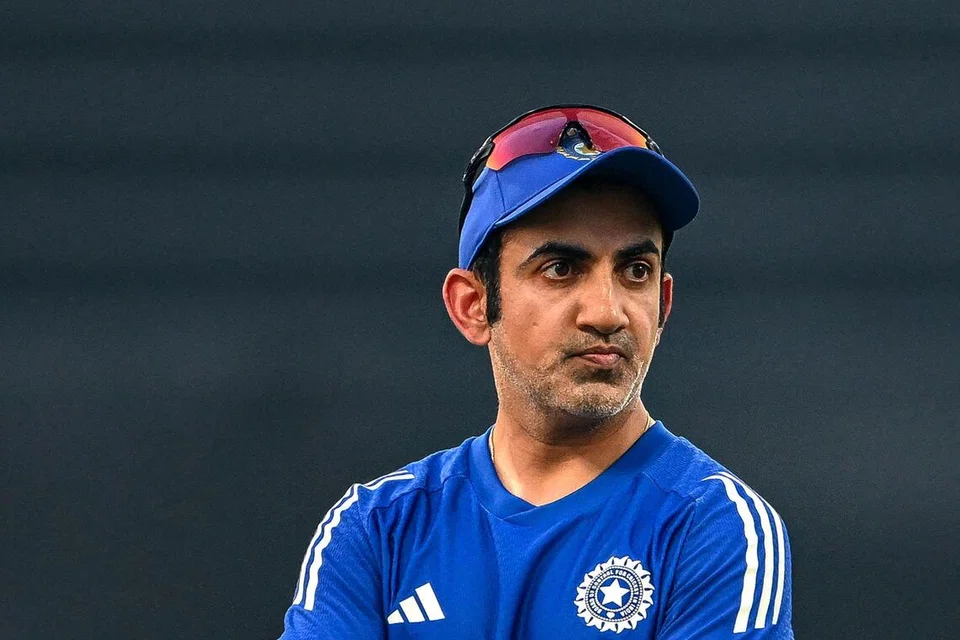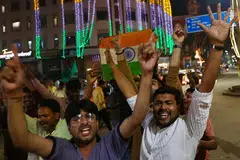India’s harrowing 408-run loss to South Africa on Nov 26 in Guwahati – their worst defeat in Test history – has sounded alarm bells across the cricketing establishment.
The 0-2 home series loss, South Africa’s first win on Indian soil since 2000, has turned the spotlight firmly on head coach Gautam Gambhir and the cracks in India’s red-ball vision, reported NDTV.
This wasn’t just a loss – it was an unravelling. In a format where India was once unbeatable at home, the Proteas dominated every session.
From Senuran Muthusamy and Marco Jansen’s century partnership to Simon Harmer’s spin wizardry (6-37), South Africa dictated terms.
India, by contrast, lacked cohesion and character. Their batters averaged a dismal 15.23 across the series – their second-worst return in any Test series. No Indian batter registered a century, only the third time in history that’s happened in a home series.
The series marked India’s fifth home Test defeat in seven matches – a dramatic fall from their golden era where home series wins were near-certain.
Since taking charge, Gambhir’s Test tenure has yielded just two series wins out of six – against Bangladesh and West Indies.
Against stronger sides, it’s been a litany of defeats: a 0-3 whitewash by New Zealand last year, now followed by this South African drubbing. In 19 Tests under his watch, India have lost 10 – a 52 per cent loss rate, almost unheard of in modern Indian Test cricket.
Gambhir’s insistence on constant experimentation, rotating players, and backing all-rounders over specialists has drawn criticism from ex-players and fans alike. His vision appears blurry – a team without defined roles, unclear leadership, and no Test identity.
In Guwahati, angry fans chanted “Gautam Gambhir hai hai” as the coach stood by helplessly. This public expression of discontent reflects a broader sentiment: that India is directionless in the longer format.
In the post-match press conference, Gambhir didn’t dodge blame. “It starts with me,” he admitted. Yet he was clear – he would not single out players.
Still, questions swirl. Why has India lost their edge at home? Where is the next generation of red-ball leaders? Why do batting collapses – like from 95-1 to 122-7 – happen so frequently?
Despite speculation, Gambhir will not be sacked immediately. Indian cricket board (BCCI) sources told NDTV he has full backing – at least till the end of the South Africa tour.
“He is rebuilding a team,” one source said. A review meeting between selectors and the coaching staff is expected soon.
Gambhir himself downplayed his importance: “Indian cricket is important. I am not.” But he also defended his record, citing India’s white-ball success under him – Champions Trophy, Asia Cup, and a drawn series in England. “The team is learning,” he said.
India great Sunil Gavaskar, among others, urged patience. “When India won the Champions Trophy and Asia Cup under Gambhir, no one gave him a lifetime contract,” Gavaskar pointed out. “Now that they’ve lost, everyone’s calling for his head.”
Still, the pressure is real. Gambhir’s approach – including his remark that “tough characters with limited skills” make the best Test cricketers – signals a philosophy at odds with India’s traditional reliance on technically sound batters and specialist bowlers.
The crisis runs deeper than one coach. It’s structural. Injuries, retirements (Rohit Sharma, Virat Kohli), and lack of red-ball depth have hurt.
But unless the BCCI, selectors, and coaching staff work in sync to rebuild India’s Test core – with clarity, consistency, and long-term vision – India risks fading into irrelevance in the format they once dominated.
India now sit fifth in the WTC 2025–27 table with just a 48.18 points percentage. The road to the final looks steep.


